It was my last day in Lisbon and my last day in Portugal on my journey through Southern Europe two summers ago. There was one place I’d been dying (hehe) to see while in the country – the Chapel of Bones in Évora! So on my last day, I decided to catch a train to the city of Évora and spend the day there.
The Chapel of Bones – or Capela dos Ossos as it’s called in Portuguese, is Évora’s most popular sight. But the historic city has a lot more to offer, something I soon realized when I stepped off the train and walked into the city centre through narrow, winding streets lined with whitewashed buildings, remnants of the time when the city was under Moorish rule.
Miraculously, Évora survived the devastating earthquake of 1755 which left most of Lisbon in ruins. In fact, the old town centre is incredibly well-preserved and some of the medieval walls that once enclosed the city still stand, as do many other historical monuments from different periods of history. It’s no surprise that the city is a UNESCO World Heritage Site!

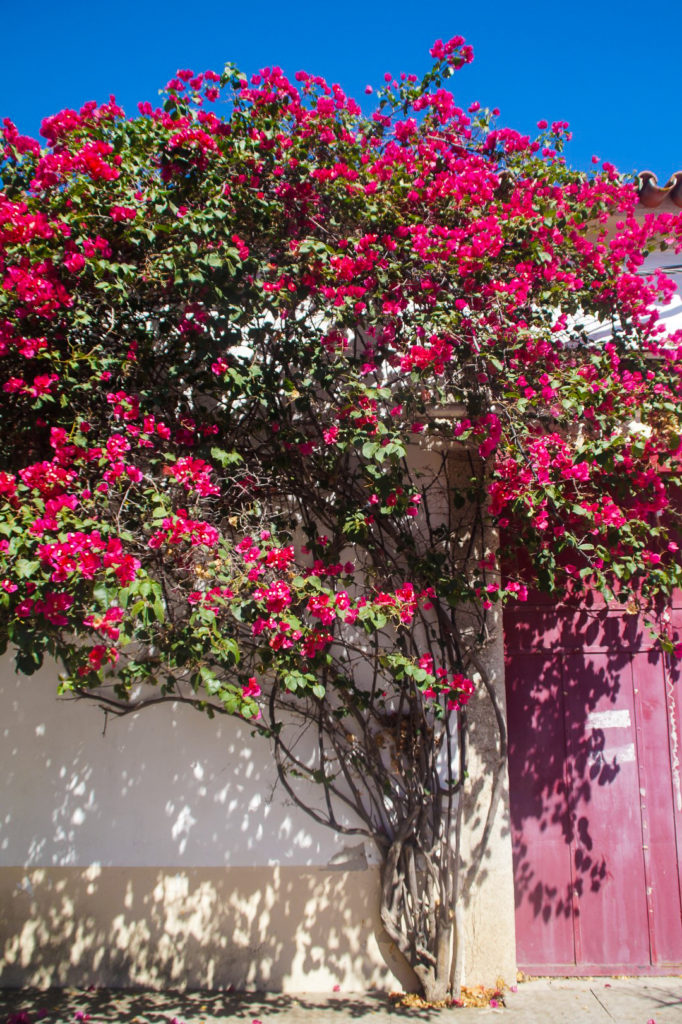
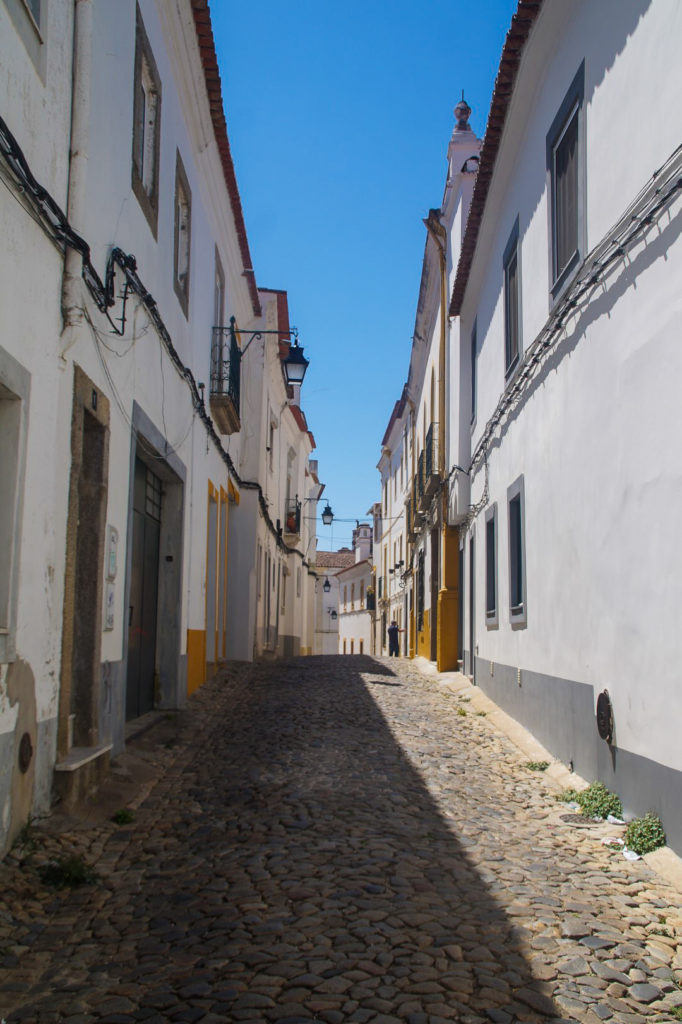
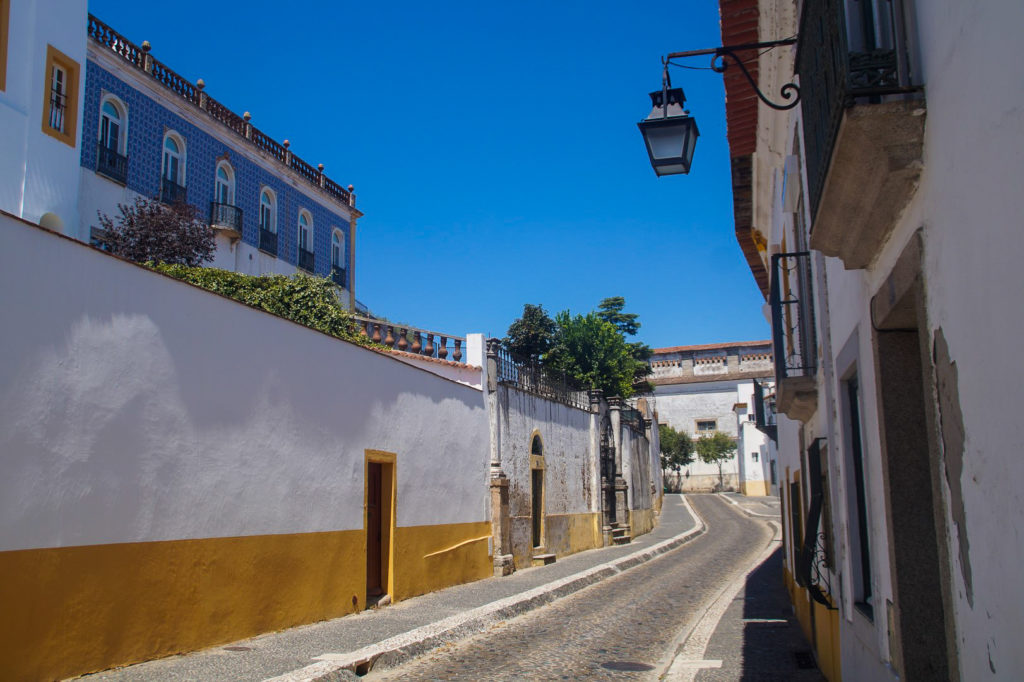
I made my way to the Church of St. Francis, built between 1475 and the 1550s, which houses the chapel I’d come all the way to Évora to see. I purchased my ticket for the small fee of 3,5 euros and walked straight into the small room which was completely covered with human skulls and bones, arranged in a variety of patterns. It was almost beautiful, actually!
Gory as it might seem, the chapel was actually created with the best intentions. It was built between 1460 and 1510 by Franciscan monks who unearthed around 5,000 skeletons, apparently from soldiers who had died in battles and victims of the plague. The (rather unusual) idea came from the city graveyards running out of space! The purpose of the chapel was to preserve the bones for the Day of Resurrection, which some Christians believe will be at the end of the world when the dead will be restored to their physical bodies. But there was also another purpose of the chapel. As morbid as it might sound, they wanted to provide a site for contemplation for the living!
As I entered the chapel, I noticed a sentence carved above the entrance. It says, “Nós ossos que aqui estamos, pelos vossos esperamos,” which translates to, “We bones that are here, await yours.” A little something to think about while studying all the old skulls and bones!
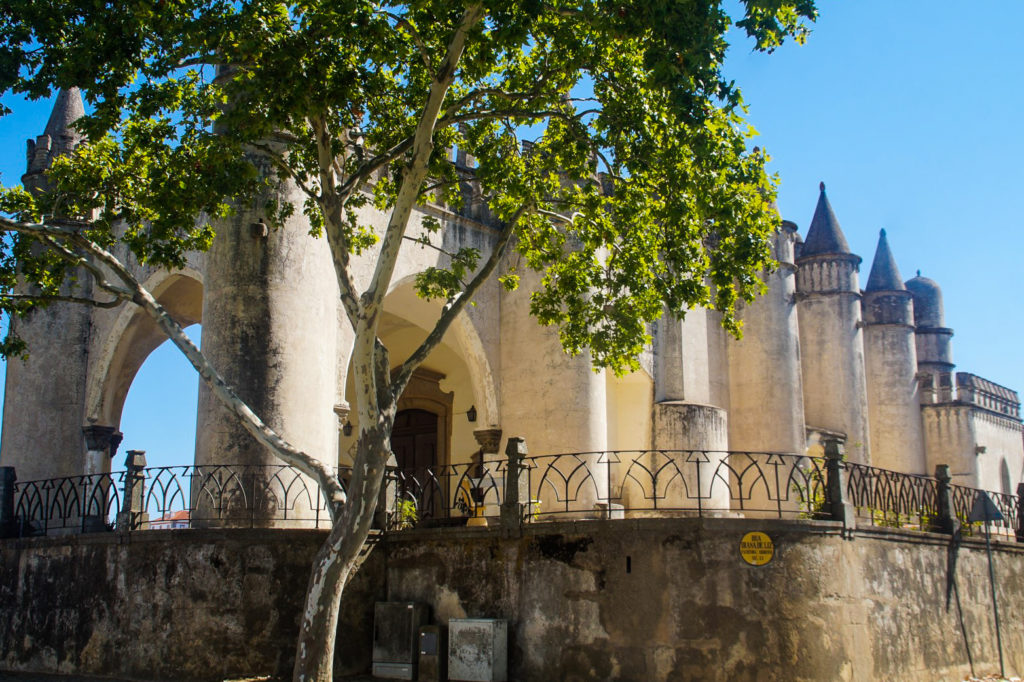
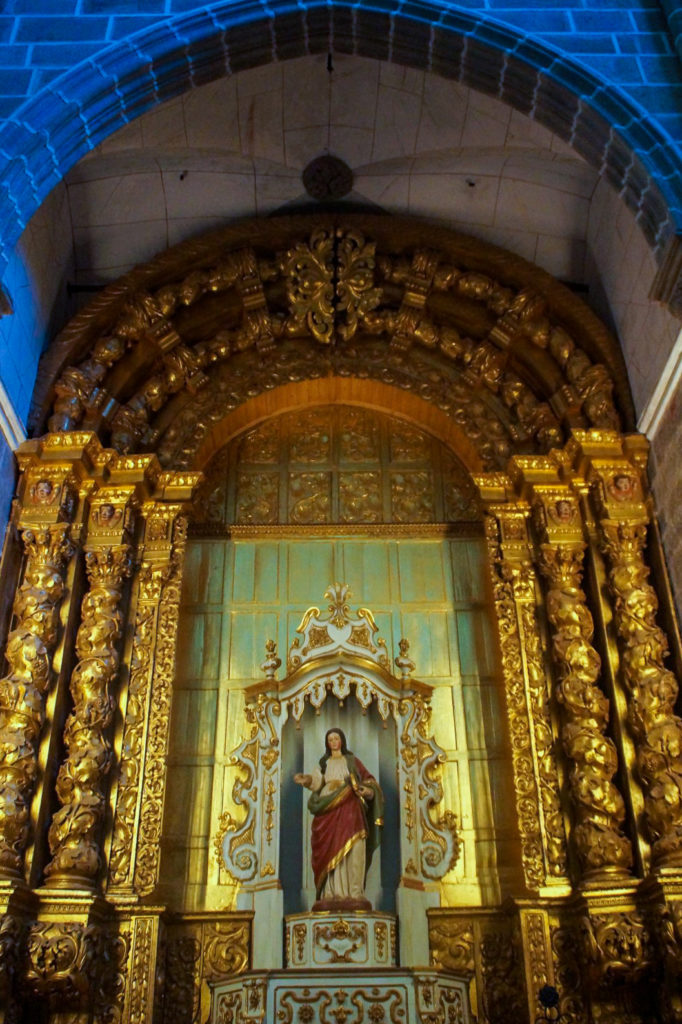

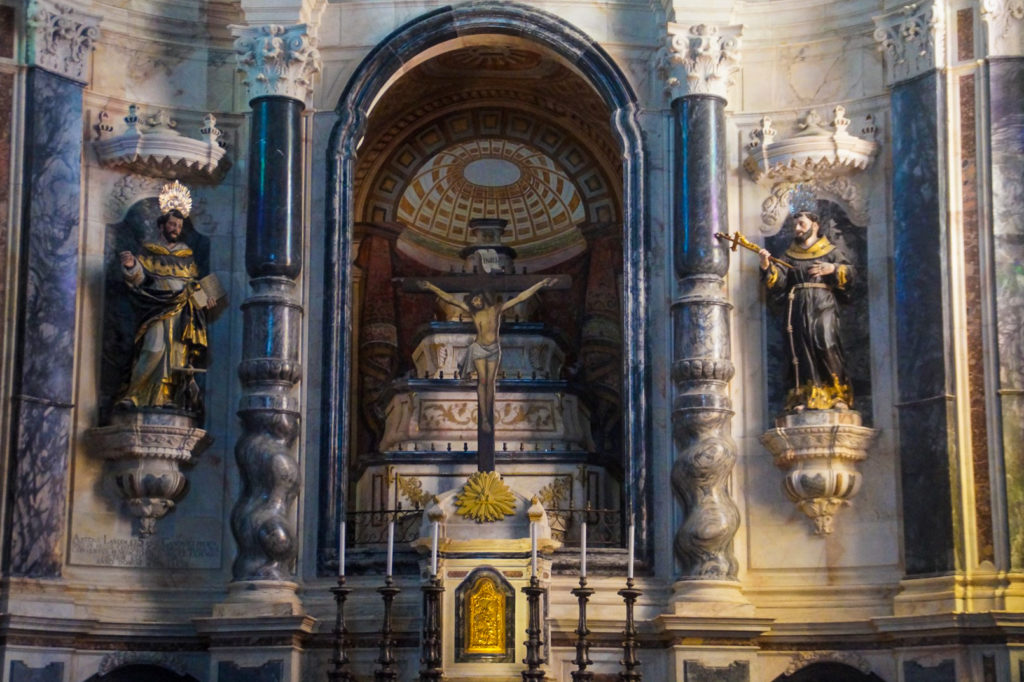
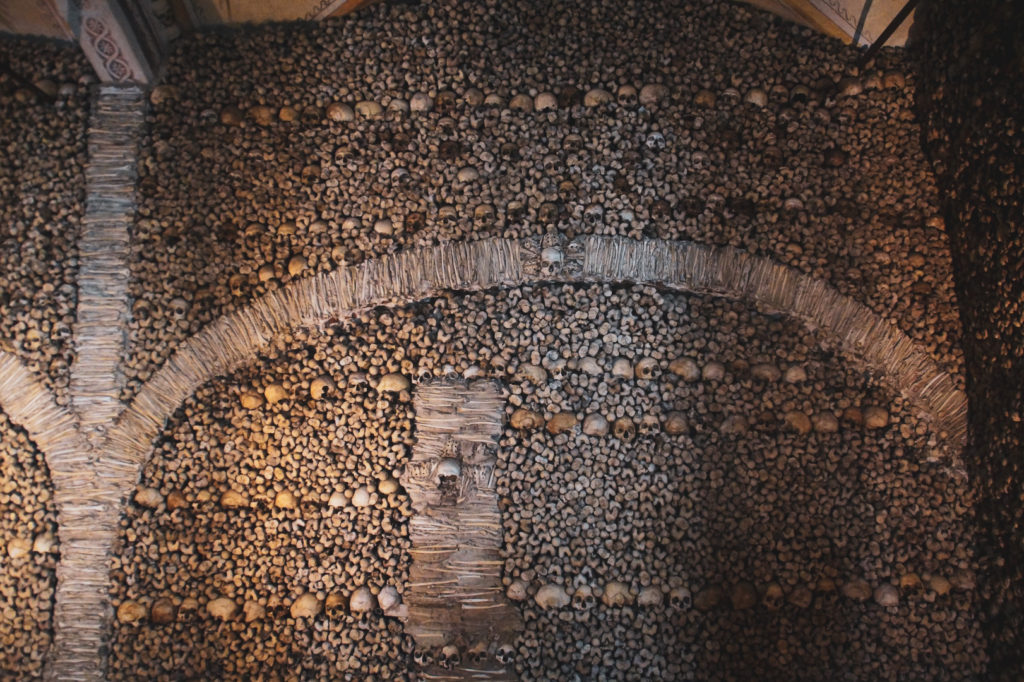

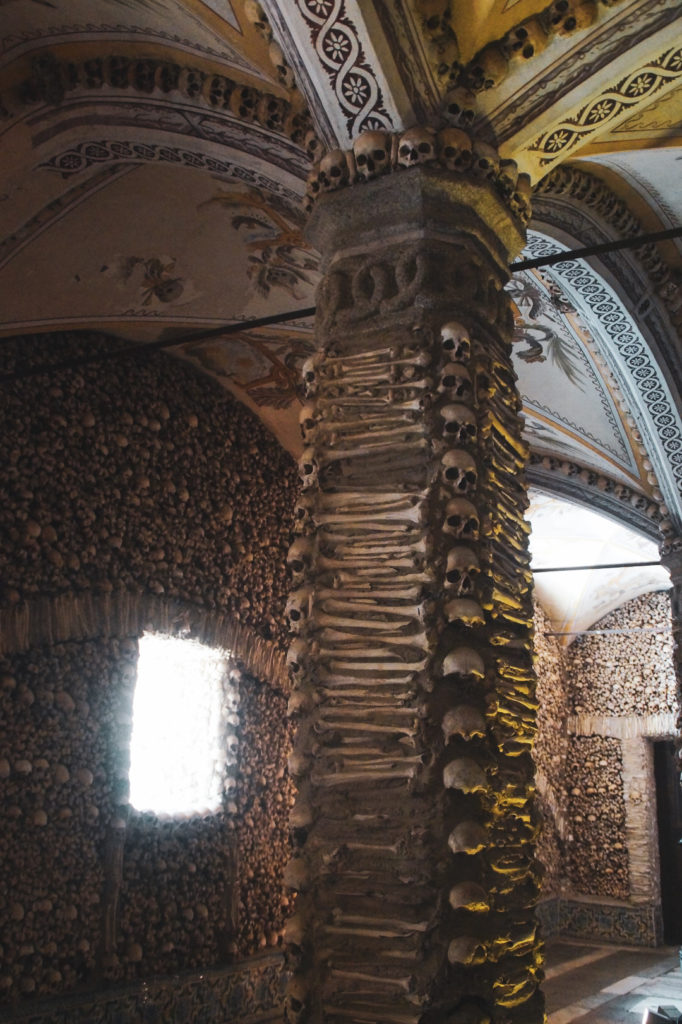
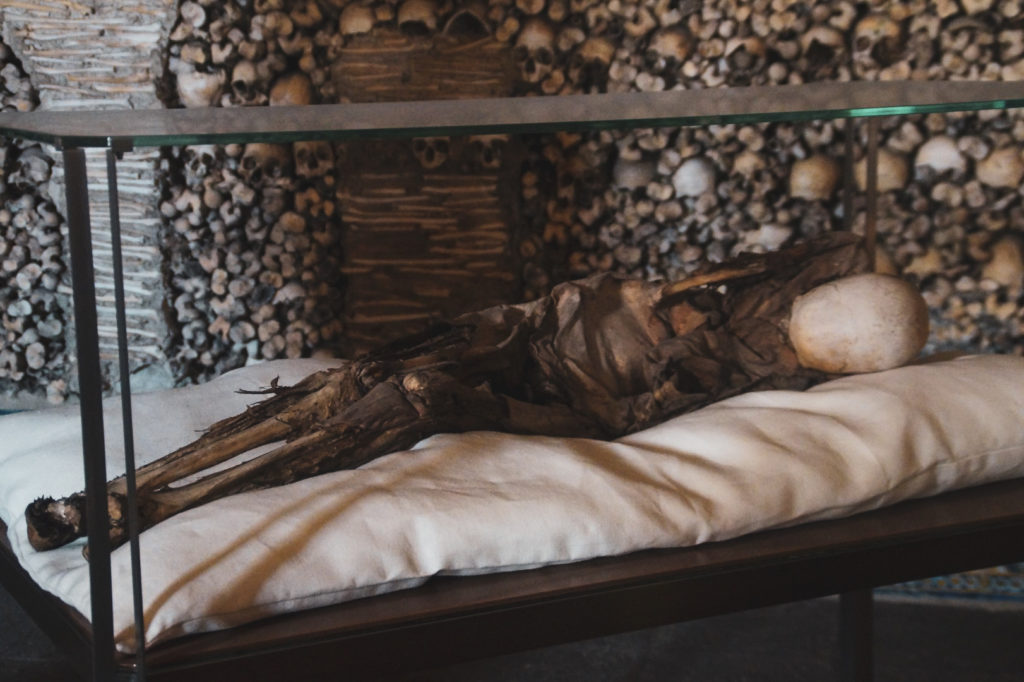
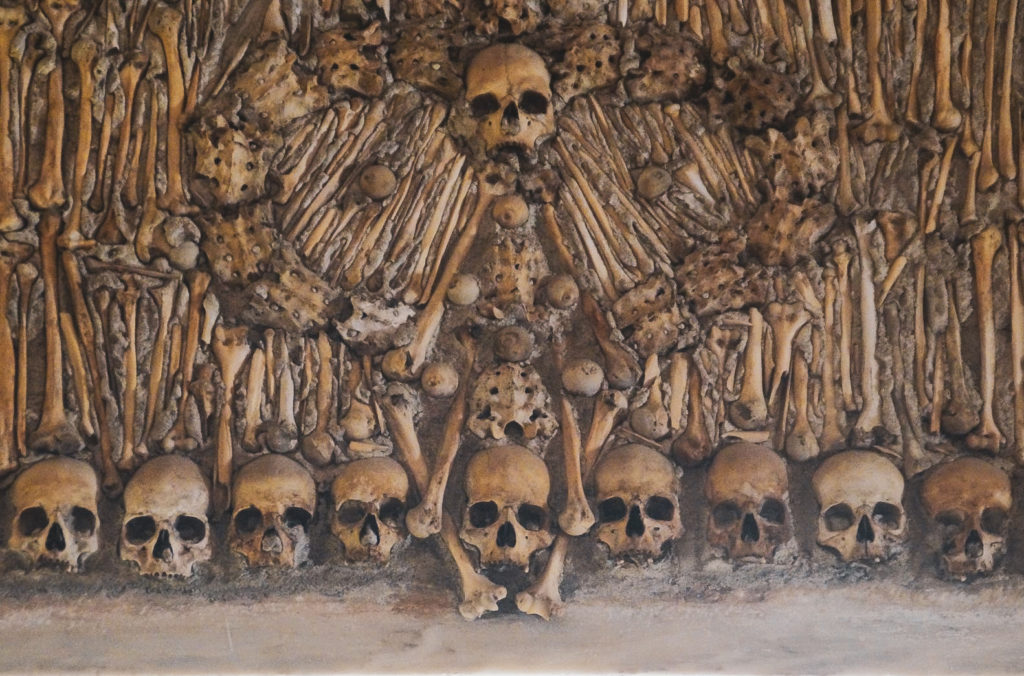
The gory chapel made me hungry, so I walked into the heart of Évora, to the historical square, Praça do Giraldo, where I picked up a vegan snack. I found some shade in the nearby park, Jardim Público de Évora, and sat down to eat my lunch, but I was soon interrupted by a gorgeous peacock!
I fed him a little bread and then he wouldn’t stop following me! Eventually, I spotted his family, complete with adorable baby peacocks, and he finally forgot about me and my tasty bread!

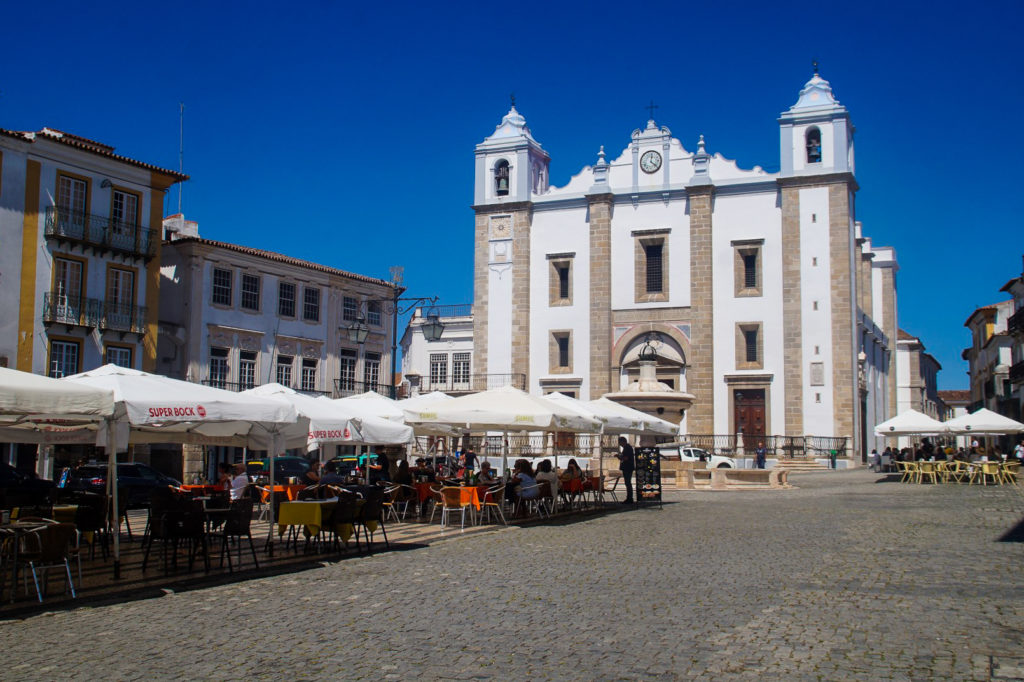
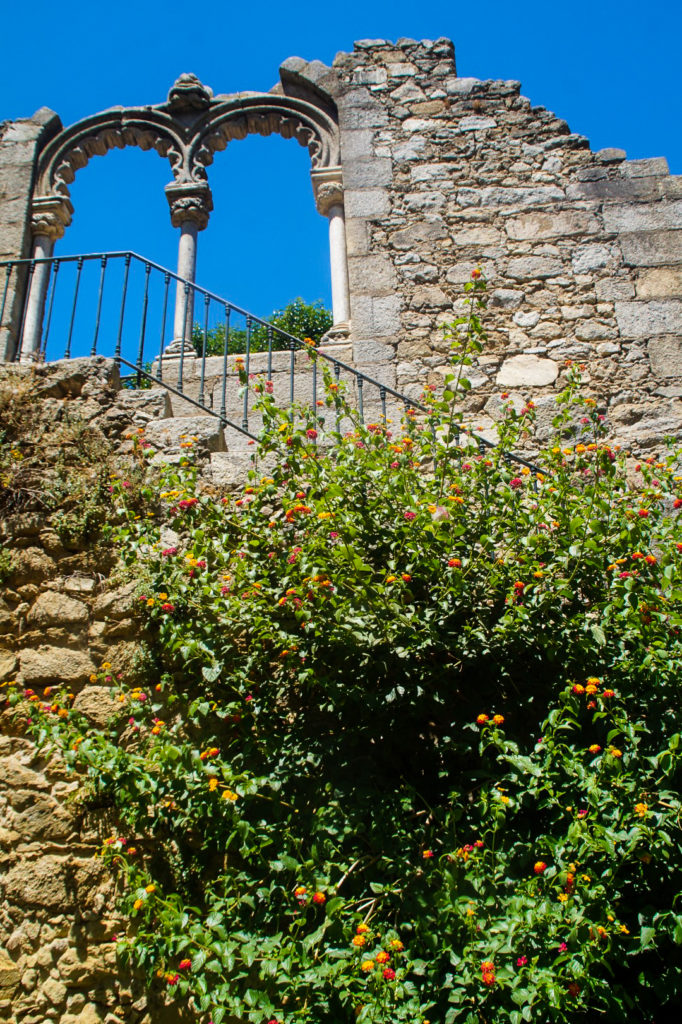




Besides the Chapel of Bones, there was one other place in Évora that I just had to visit. The city’s university is the second-oldest in Portugal (after the University of Coimbra), founded in the 16th century. Unlike most universities that I’ve visited around the world, I had to pay a fee of 3 euros to enter, but it was well worth it for the gorgeous cloistered courtyard and decorated lecture rooms that awaited.
Most rooms I entered were beautifully decorated with blue and white tile panels and colourful murals, but none were as gorgeous as the exquisitely decorated library. Sometimes I regret not studying at a historical university like the one in Évora (especially since I studied archaeology!). I can only imagine how incredible it must be to do research in halls that breathe history.
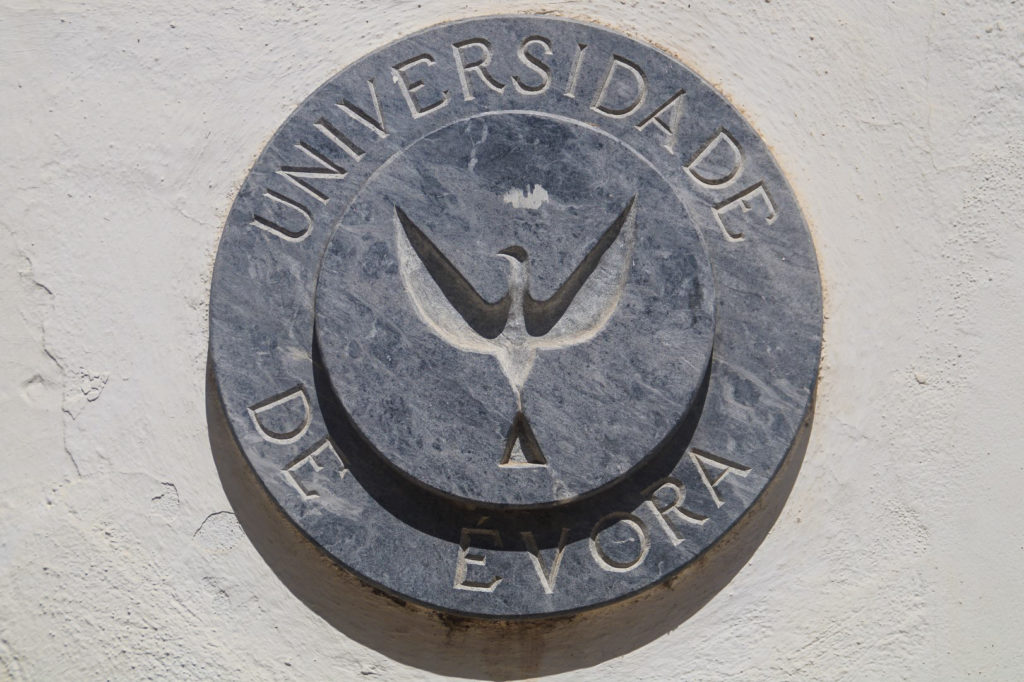
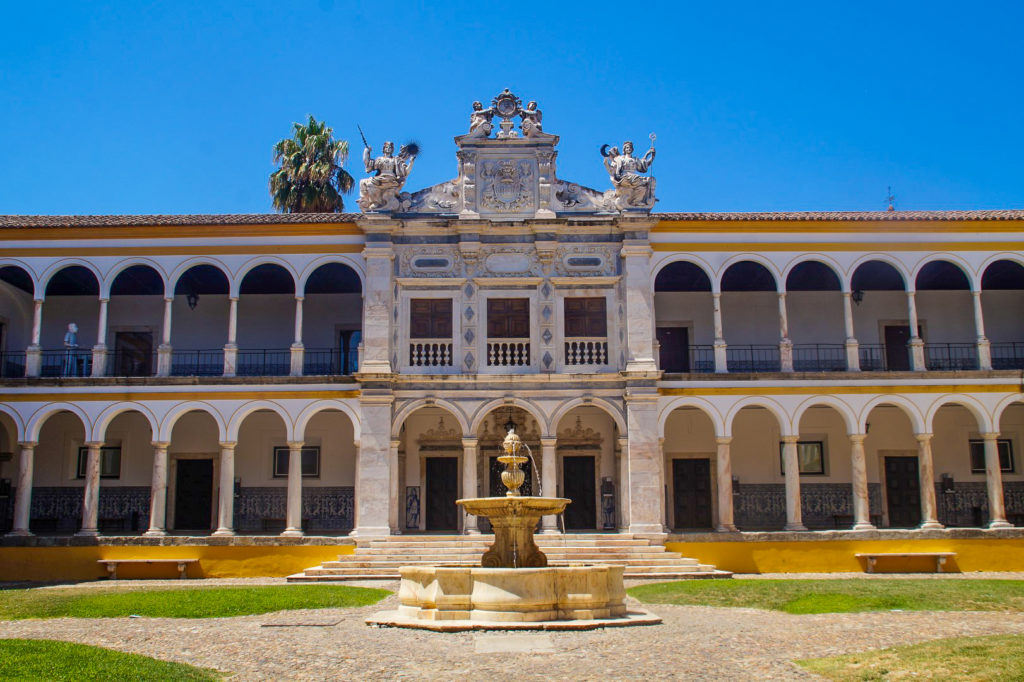

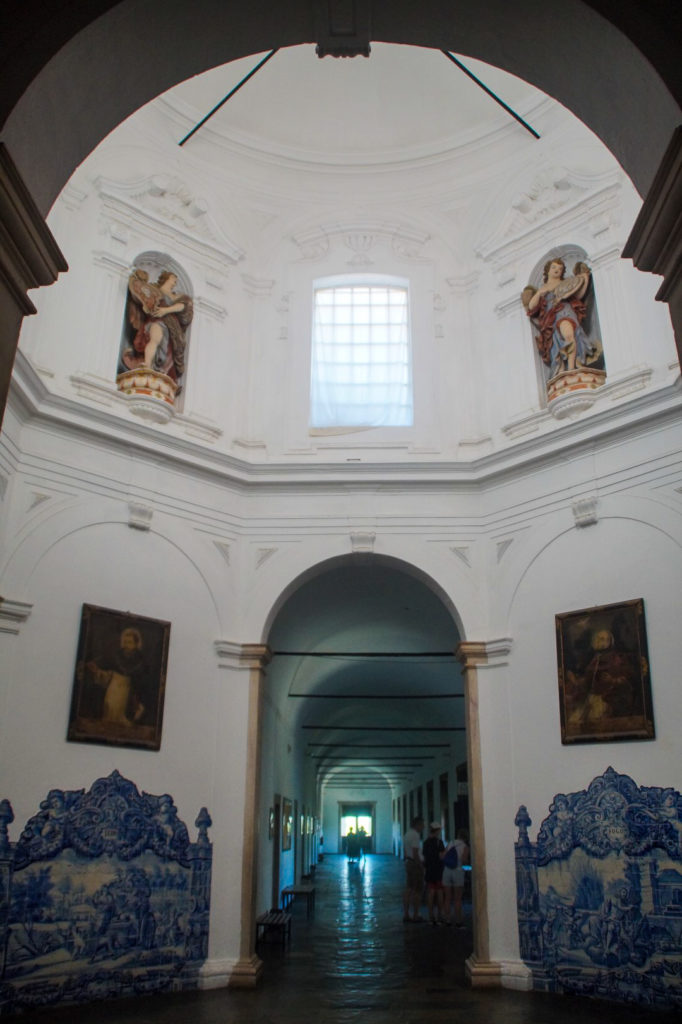


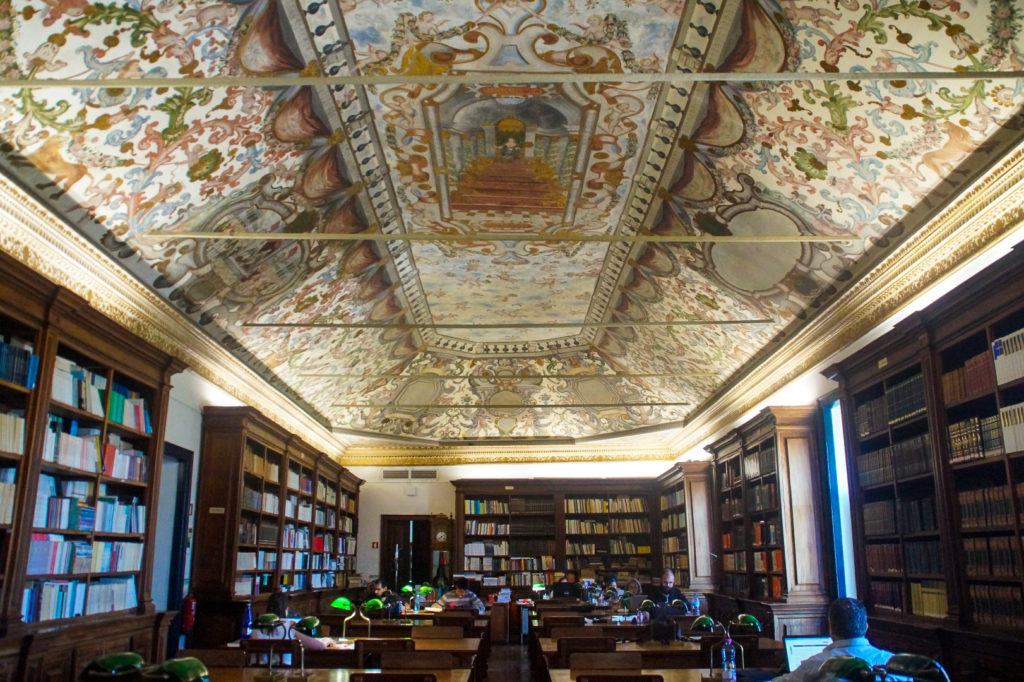

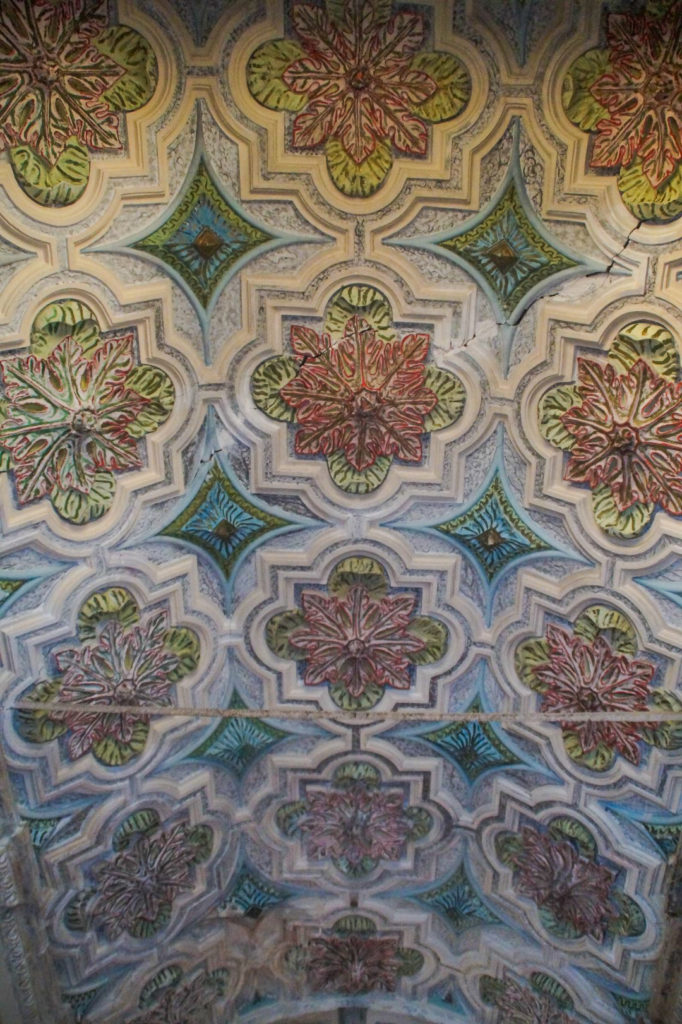
Continuing with my tour through Évora’s past, I headed to Jardim Diana, a lively spot in the centre with a wonderful view over the red roofs of the city. Right next to it stands the Roman Temple, one of the best preserved Roman monuments in all of Portugal!
It’s believed to have been constructed around the first century AD, but unfortunately, it was destroyed sometime during the 5th century by invading Germanic tribes. It wasn’t until the late 19th century that it was reconstructed similar to its former glory.

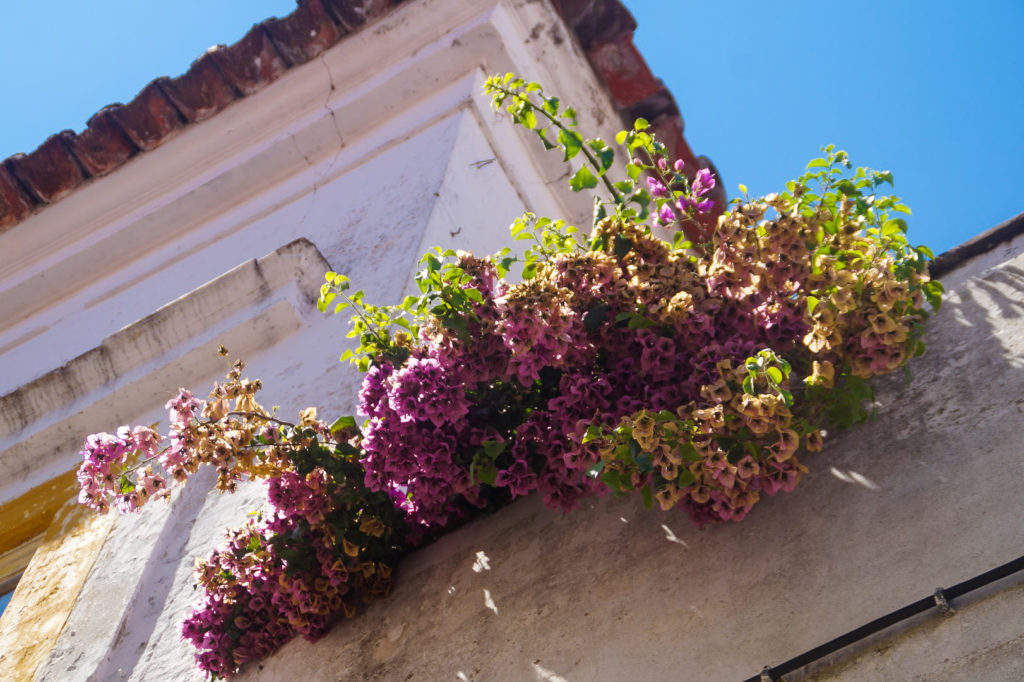
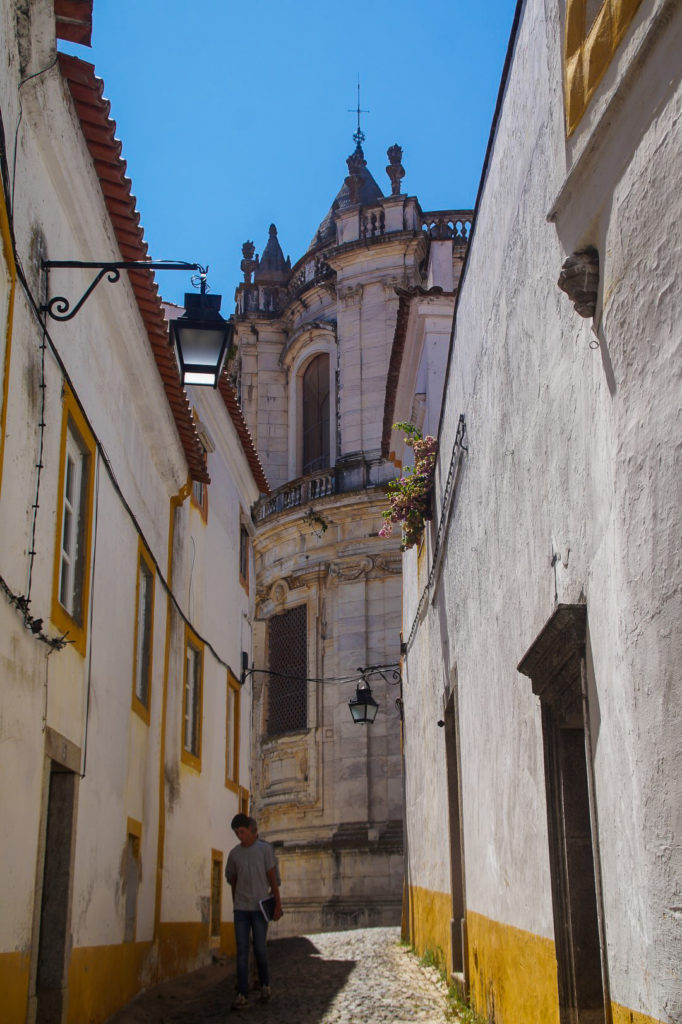
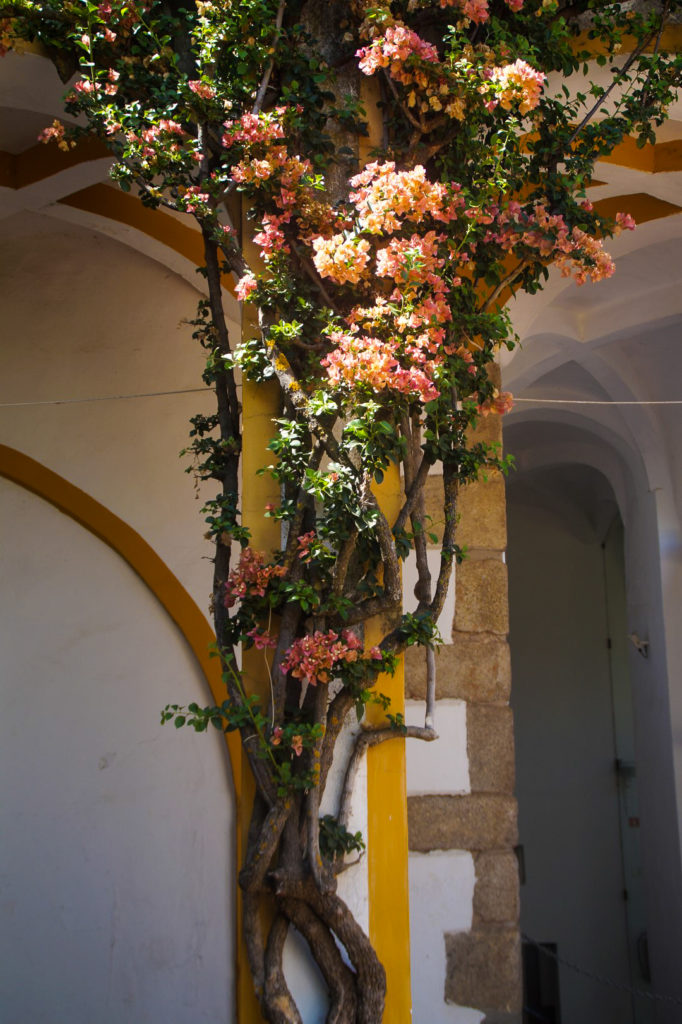
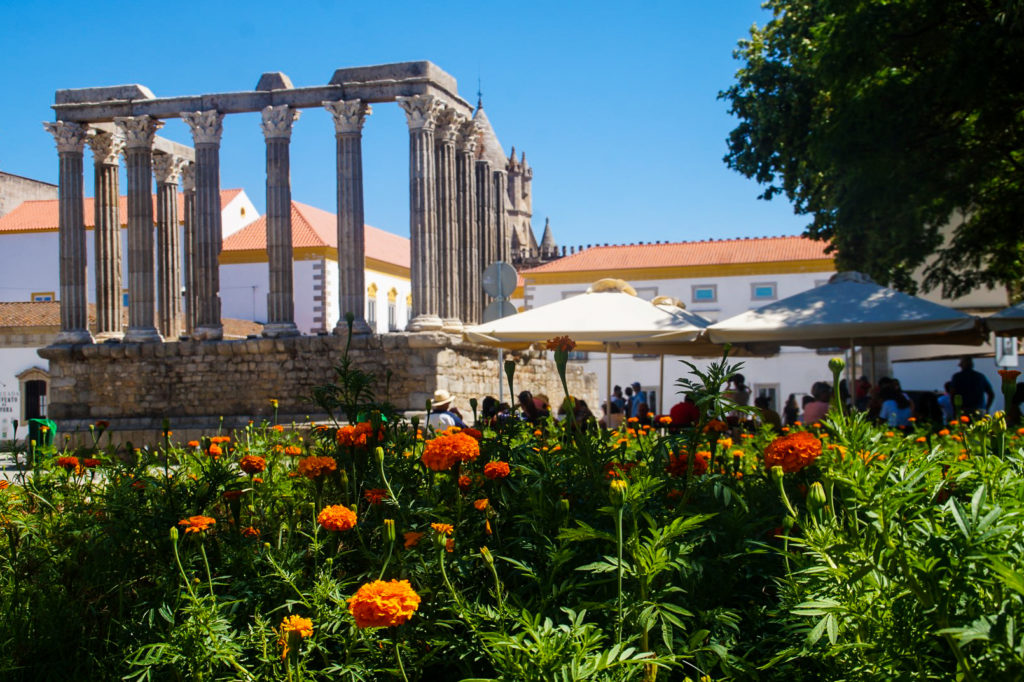

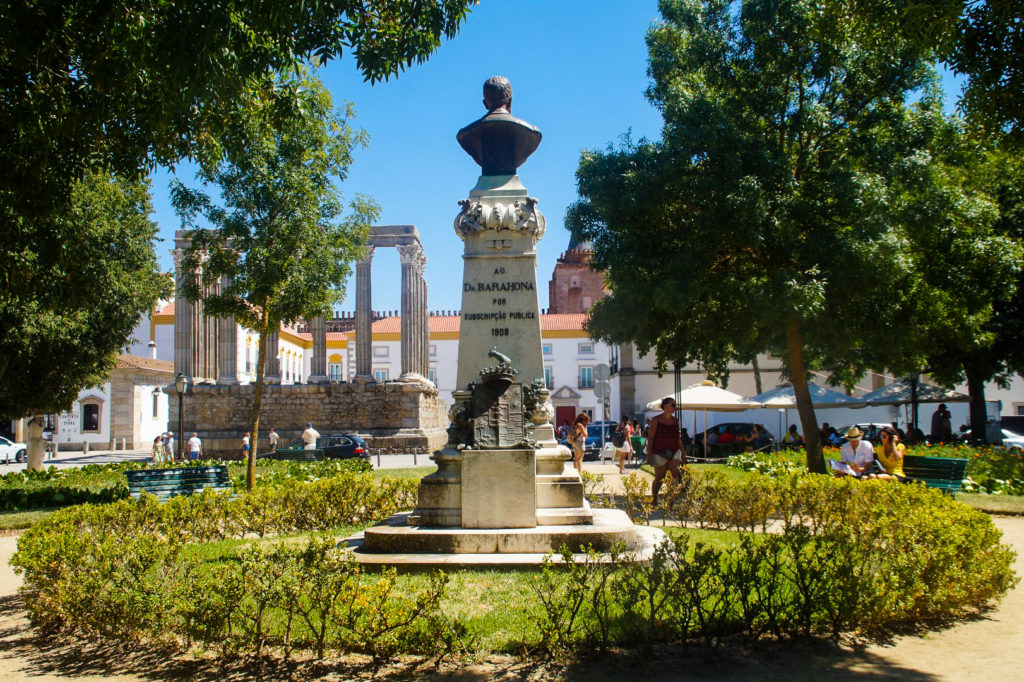
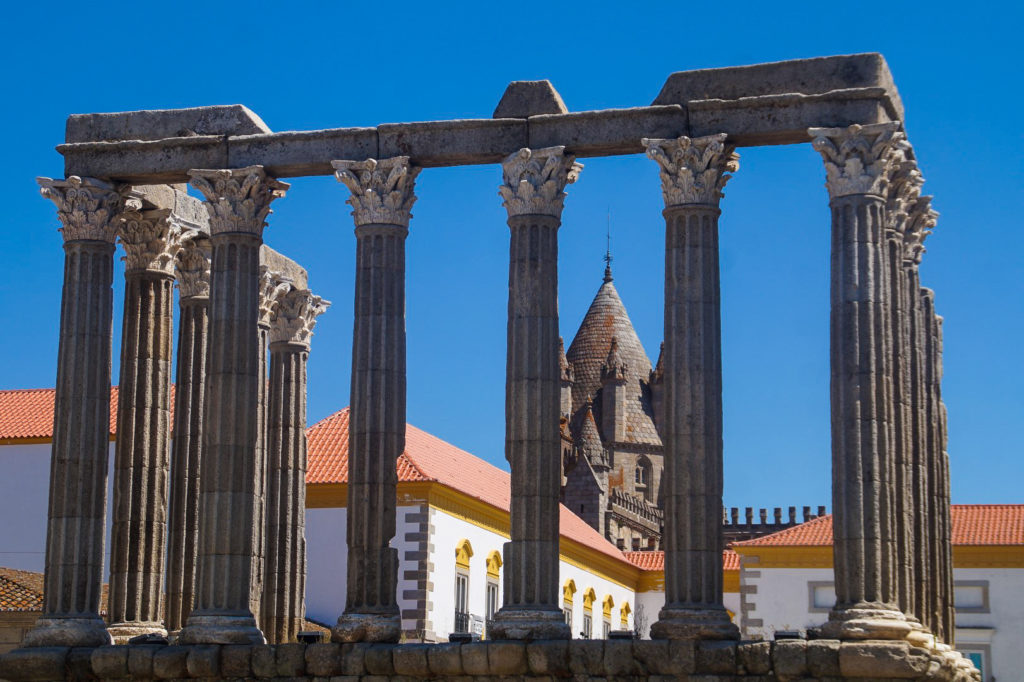
Towering above the Roman Temple, the Cathedral of Évora invited me to climb its tower to enjoy my last glimpses of the beautiful city.
The Roman Catholic cathedral is the largest medieval church in Portugal, and it’s one of the best examples of Gothic architecture in the country. But it doesn’t look like your typical cathedral as certain elements resemble a fortress. Apparently, this is due to being built in the 12th century, just as the Moors were being driven out of the area by the Christians.
I purchased my ticket for 3,5 euros and spent some time exploring the interior of the cathedral, before making my way up to the roof where I found some gorgeous vistas over Évora.

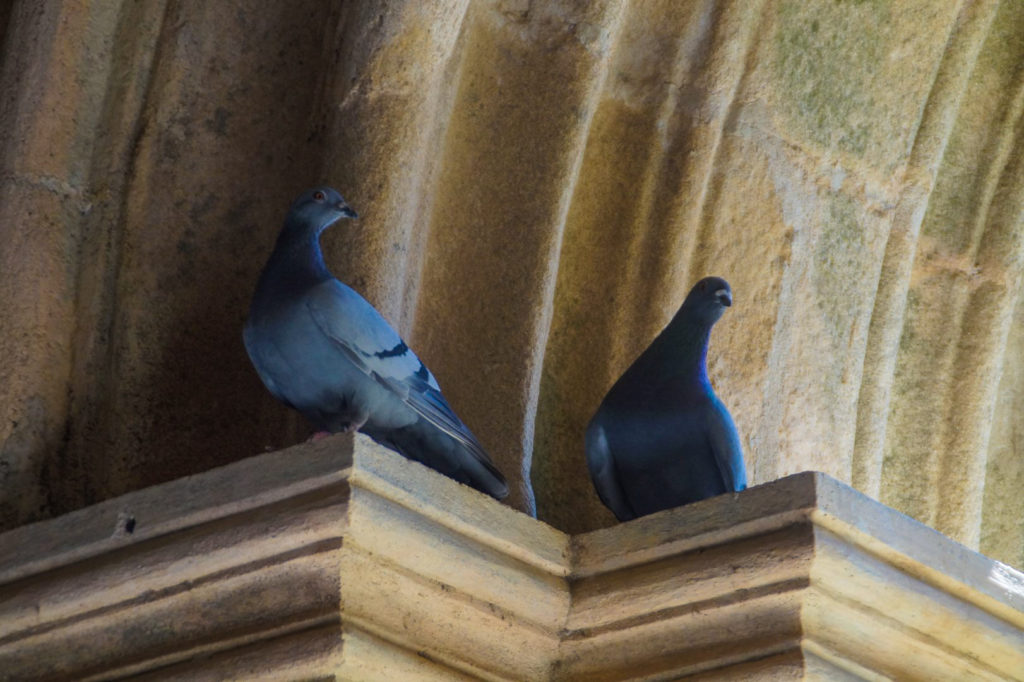
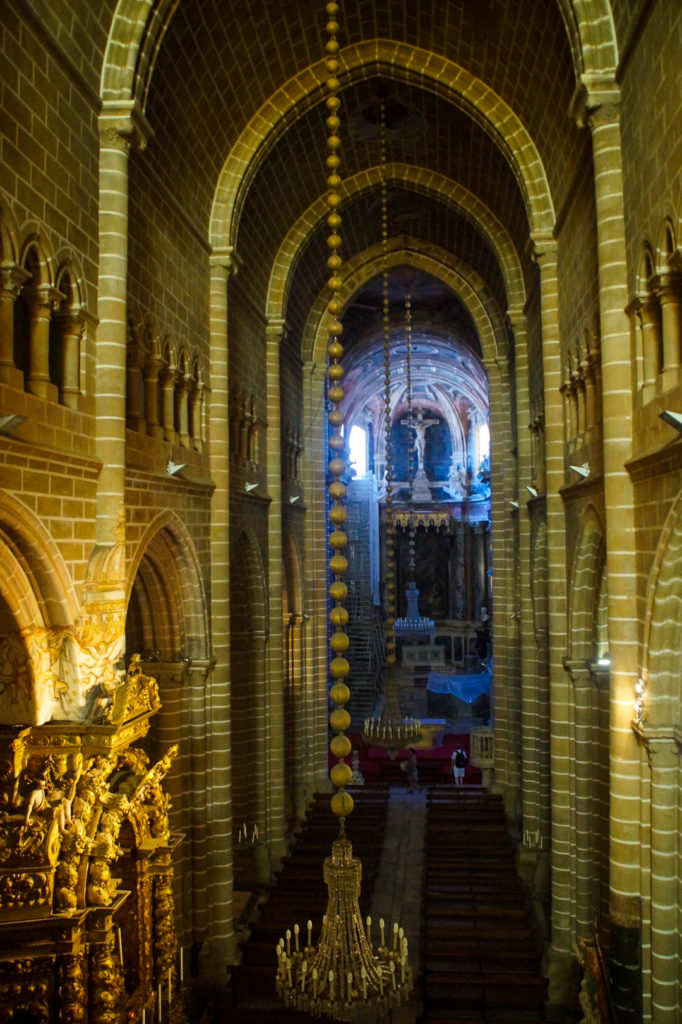
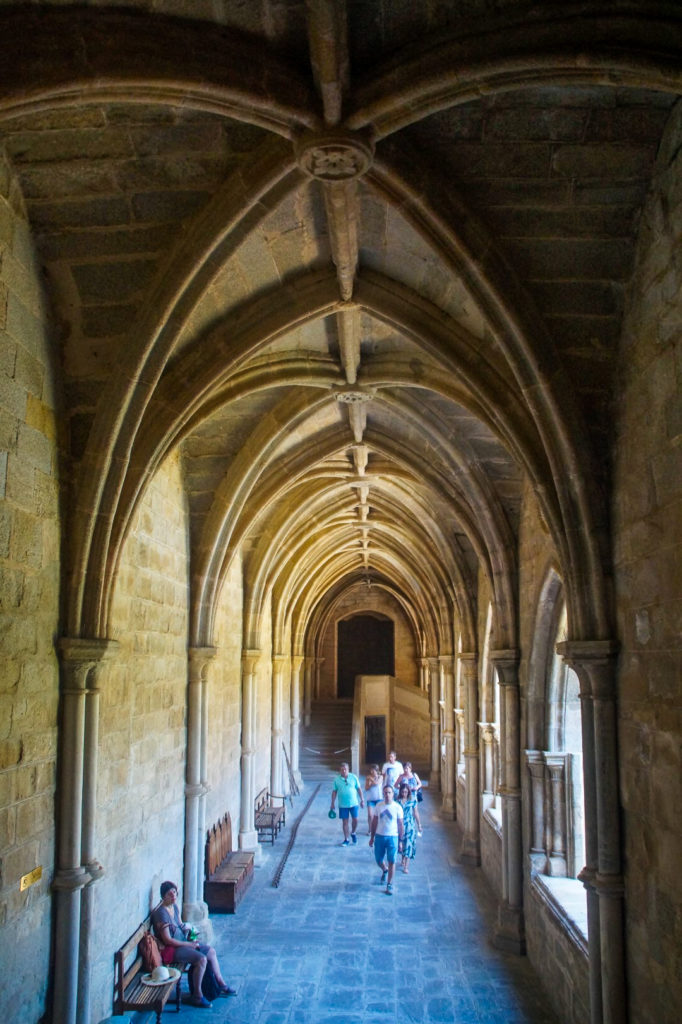
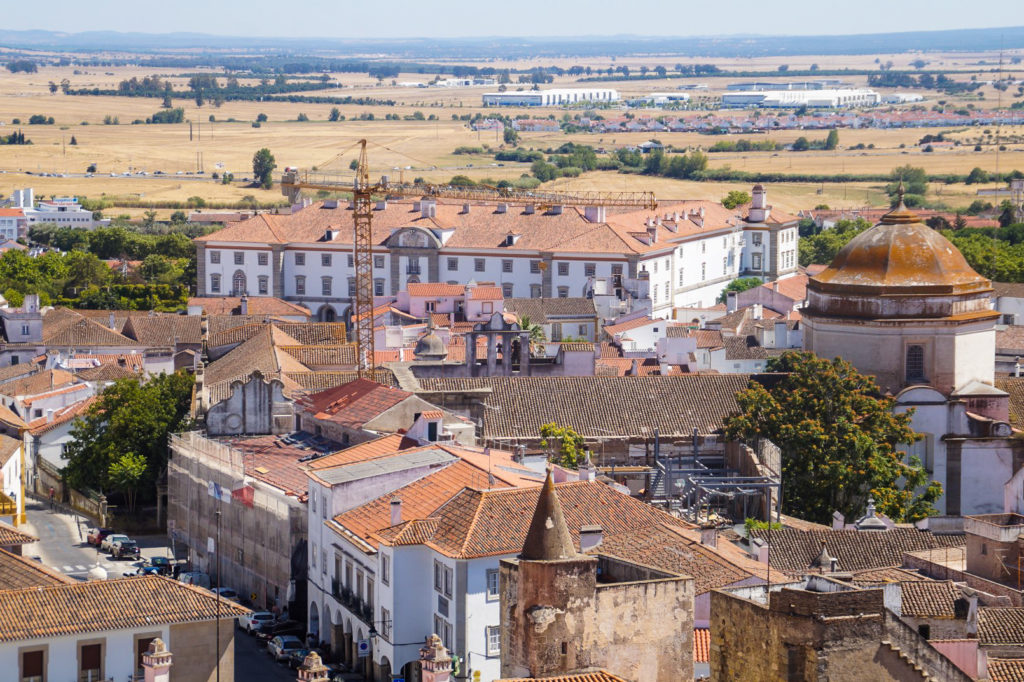
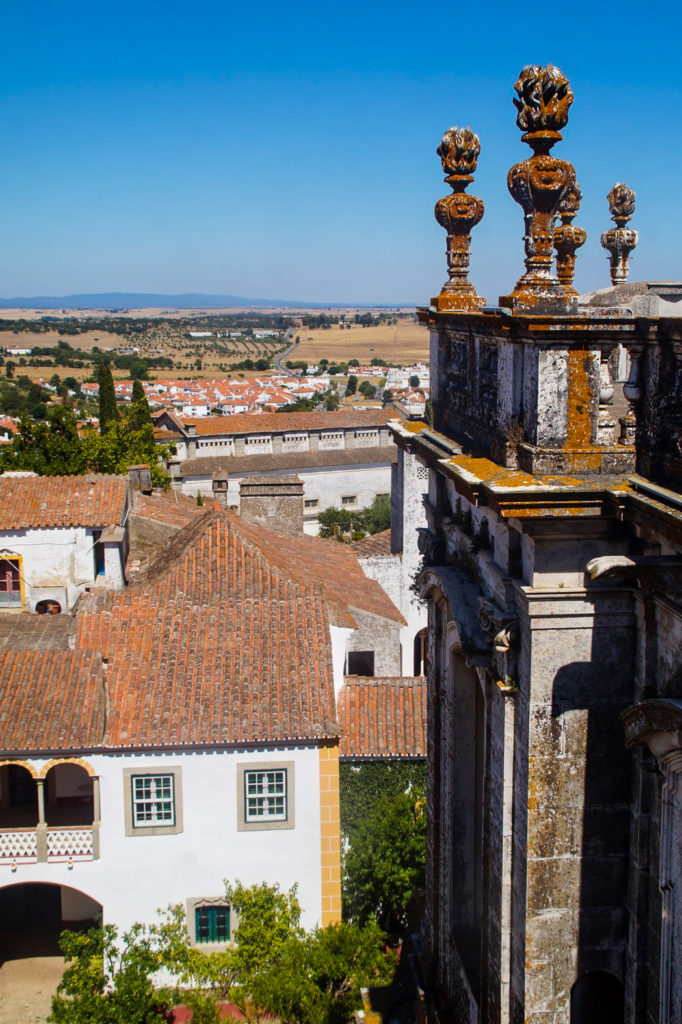
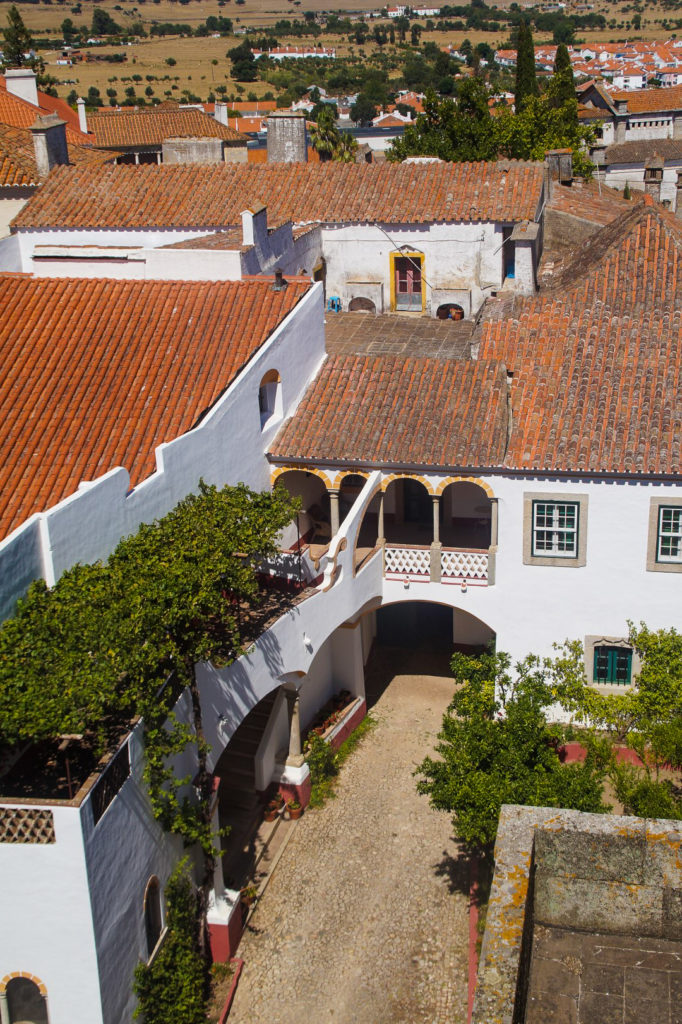
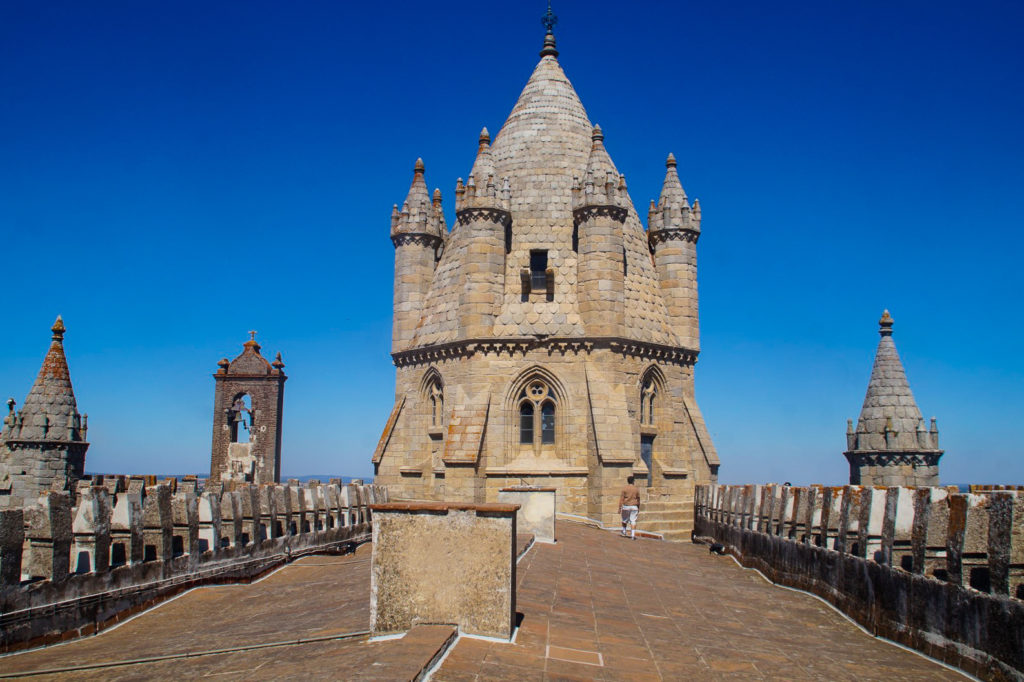
Évora was a perfect day trip from Lisbon, and a perfect place to end my short but wonderful few days in Portugal. For some reasons, I didn’t have high expectations for the country, but between historic Évora, the beautiful capital city of Lisbon and the fairytale landscapes dotted with castles in Sintra, Portugal definitely surprised me – a lot! There’s just no way I won’t return to see more!
WANT MORE INFO?: Download a city guide for Évora with GPSmyCity here!

Leave a Comment